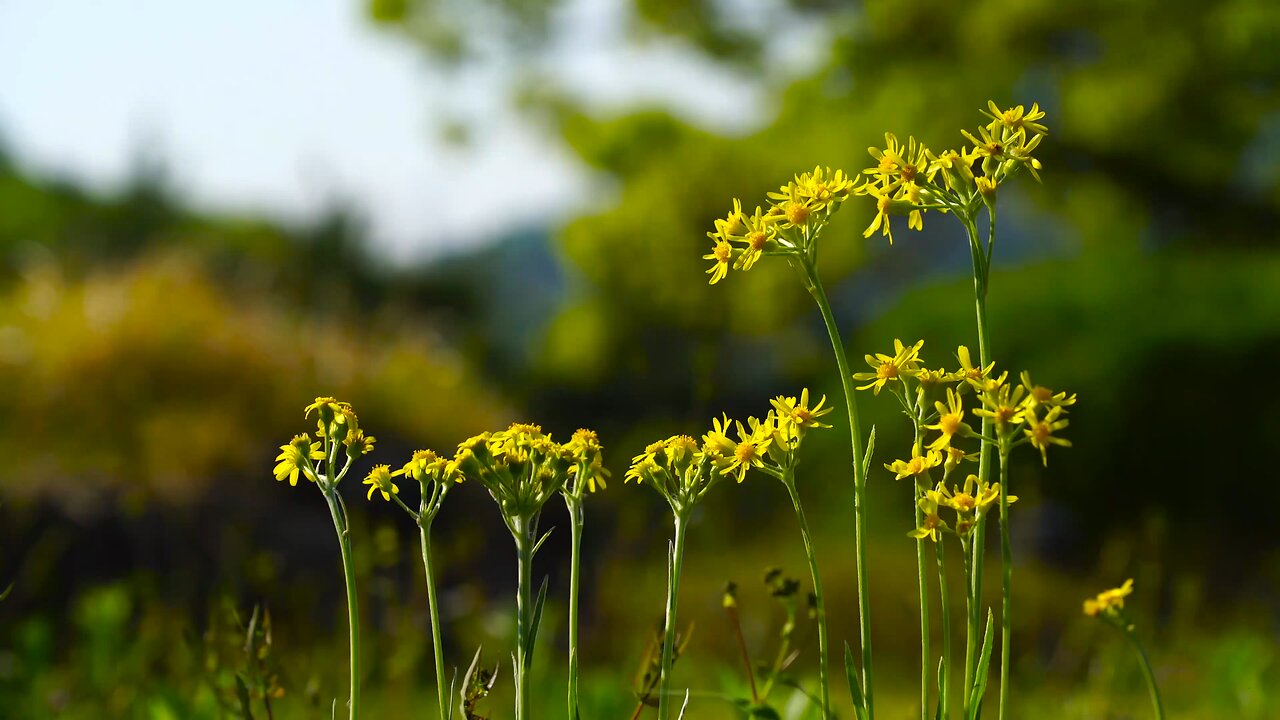Premium Only Content

"Guardians of the Grasslands: Protecting Tephroseris integrifolia and Its Ecosystem"
*Tephroseris integrifolia*, commonly known as the Field Fleawort or Jersey Cudweed, is a herbaceous perennial plant belonging to the Asteraceae family. It is primarily found in Europe, particularly in regions with dry, calcareous soils such as grasslands, open woods, and limestone pavements. Here's a more detailed look at this plant:
### **Botanical Description:**
- **Height:** Typically grows between 10 to 30 cm tall.
- **Leaves:** The leaves are usually lanceolate or oblong, with a greyish-green hue. The basal leaves form a rosette at the plant's base, while the upper leaves are smaller and clasp the stem.
- **Stems:** Erect and covered with woolly hairs, which give the plant a silvery or greyish appearance.
- **Flowers:** The flower heads are bright yellow, often with a diameter of about 2-3 cm. They are borne in loose clusters at the top of the stem. Each flower head is composed of both ray and disc florets, typical of the Asteraceae family.
- **Blooming Period:** The plant typically blooms from late spring to early summer, usually between May and June.
- **Fruits:** The seeds are small, brown, and equipped with a pappus, aiding in wind dispersal.
### **Habitat and Distribution:**
- **Geographic Range:** *Tephroseris integrifolia* is found across Europe, with its range extending from the British Isles and France in the west to the Balkans and western Russia in the east. It is also found in parts of Central Asia.
- **Preferred Habitat:** This species thrives in dry, sunny locations with well-drained, calcareous soils. It is often found in limestone grasslands, rocky outcrops, and open woodlands. It can also inhabit disturbed areas like old quarries.
### **Conservation Status:**
- **Threats:** The plant is considered to be of conservation concern in some regions due to habitat loss, particularly the decline of traditional grazing practices that help maintain its preferred open grassland habitats. In the UK, for example, it is listed as a nationally scarce species.
- **Conservation Efforts:** Efforts to conserve *Tephroseris integrifolia* often involve habitat management, such as the maintenance of grazing regimes or the restoration of limestone grasslands.
### **Ecological Importance:**
- **Pollinators:** *Tephroseris integrifolia* is valuable for pollinators, particularly bees and butterflies, which visit the flowers for nectar and pollen.
- **Associated Species:** The plant is part of a broader community of dry grassland species, which often includes other rare and specialized plants.
### **Cultivation:**
- **Gardening:** While not commonly grown in gardens, *Tephroseris integrifolia* can be cultivated in rock gardens or wildflower meadows, provided that the soil conditions are suitable. It requires a well-drained, alkaline soil and a sunny position.
This plant's delicate beauty and ecological significance make it an interesting subject for both botanists and conservationists.
-
 LIVE
LIVE
LFA TV
14 hours agoLFA TV ALL DAY STREAM - MONDAY 8/25/25
5,197 watching -
 LIVE
LIVE
Surviving The Survivor: #BestGuests in True Crime
1 hour agoLIVE Court: Wendi Adelson Testifies Against Mom, Donna Adelson, in Dan Markel's Murder Trial
270 watching -
 LIVE
LIVE
JuicyJohns
1 hour ago $0.05 earned🟢#1 REBIRTH PLAYER 10.2+ KD🟢
115 watching -
 1:14:57
1:14:57
JULIE GREEN MINISTRIES
3 hours agoRUSSIA IS ABOUT TO RELEASE SOMETHING THAT WILL CRUSH THE ESTABLISHMENT
65.5K156 -
 LIVE
LIVE
GritsGG
1 hour agoWin Streaking! Coloring Hair at End of Stream! Most Wins 3435+ 🧠
41 watching -

Welcome to the Rebellion Podcast
20 hours ago $0.03 earnedMonday Funday - WTTR Podcast Live 8/25
12.2K1 -
 1:21:24
1:21:24
Game On!
16 hours ago $0.06 earnedTom Brady And The Las Vegas Raiders ARE BACK! 2025 NFL Preview!
30.7K1 -
 4:01:45
4:01:45
The Bubba Army
3 days agoShould RaJa Jackson Be Arrested? - Bubba the Love Sponge® Show | 8/25/25
40.2K7 -
 LIVE
LIVE
FyrBorne
15 hours ago🔴Warzone M&K Sniping: Builds So Strong They Think I'm Hacking
193 watching -
 2:01:48
2:01:48
BEK TV
3 days agoTrent Loos in the Morning - 8/25/2025
29.2K1